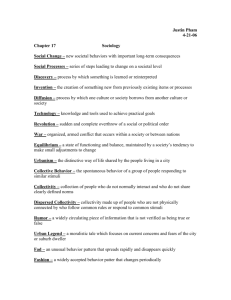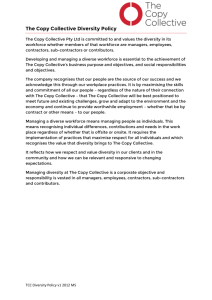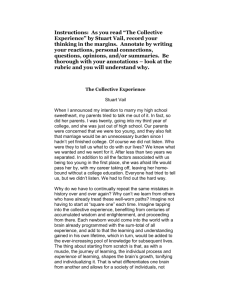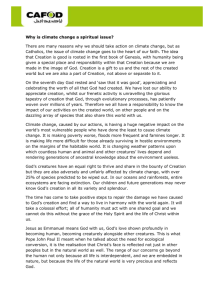Sociology Chapter 17.1
advertisement
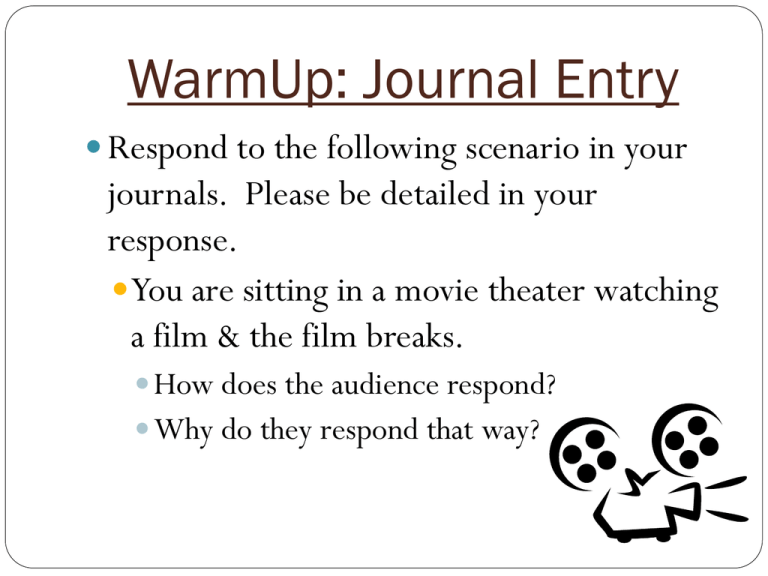
WarmUp: Journal Entry Respond to the following scenario in your journals. Please be detailed in your response. You are sitting in a movie theater watching a film & the film breaks. How does the audience respond? Why do they respond that way? Chapter 17.1 Collective Behavior & Social Movements Objectives Contrast the various types of collectivities & analyze the explanations for collective behavior that have been proposed. Identify the preconditions necessary for collective behavior to occur & explain how they build on one another. Collective Behavior the relatively spontaneous social behavior that occurs when people try to develop common solutions to unclear situations Characteristics of Collectives limited interaction unclear norms limited unity group that share these characteristics known as a collectivity Types of Collective Behavior Crowds Riots Mass Hysteria Fads Urban Legends Mobs Panics Fashions Rumors Public Opinion Crowds temporary gathering of people who are in close enough proximity to interact Mobs an emotionally charged collectivity whose members are united by a specific destructive or violent goal Riots collection of people who erupt into generalized destructive behavior, resulting in social disorder less unified & focused than mobs London Graffiti Riot Panics spontaneous & uncoordinated group action to escape some perceived threat Mass Hysteria unfounded anxiety shared by people who can be scattered over a large geographic area Fashions enthusiastic attachments among large numbers of people for particular styles of appearance or behavior Fads an unconventional object, action, or idea that a large number of people are attached to for a very short period of time Rumors unverified pieces of information that spread rapidly from one person to another Urban Legends stories that teach a lesson & seem realistic but are untrue Urban Legends Decoded: The Hook Public Opinion collection of different attitudes that members of the public have about a particular issue Explaining Collective Behavior Contagion Theory Emergent-Norm Theory Value-Added Theory Contagion Theory developed by Gustave LeBon 1st systematic theory of collective behavior 3 factors give crowds power over individuals numbers create anonymity of individual members spread of emotion like epidemic members rapidly enter state of suggestibility Emergent-Norm Theory developed by Ralph Turner & Lewis Killian people in a crowd often faced with a situation in which traditional norms do not apply no clear standards of behavior new norms gradually emerge Value-Added Theory proposed by Neil Smelser attempted to predict if collective behavior would occur & the direction it might take taken from economic theory of the production process 6 basic preconditions for social behavior: 1) structural conduciveness 2) structural strain 3) growth & spread of generalized belief 4) precipitation factors 5) mobilization for action 6) social control CHAPTER 17: CLASSWORK Page 448: #2-3 Page 455: #2-3 Page 458: #1-10 Identifying People & Ideas Page 458: #1-7 Understanding Main Ideas Page 459: #1-4 Building Social Studies Skills Group Activity: Collective Behavior Posters In groups of 3, create a poster for 1 of the previously discussed types of social behavior. Be sure to include relevant facts, examples & illustrations to support your definitions.


